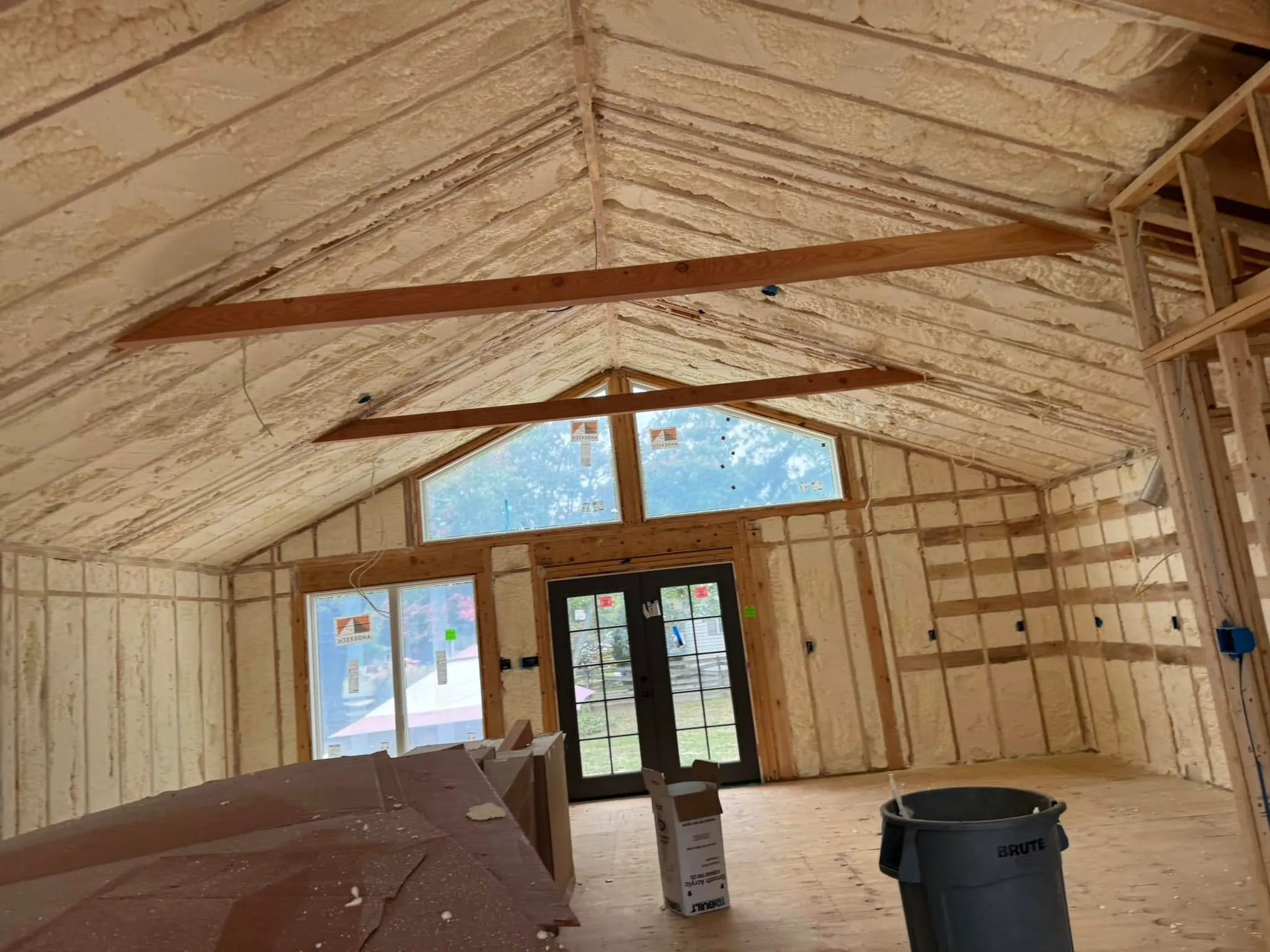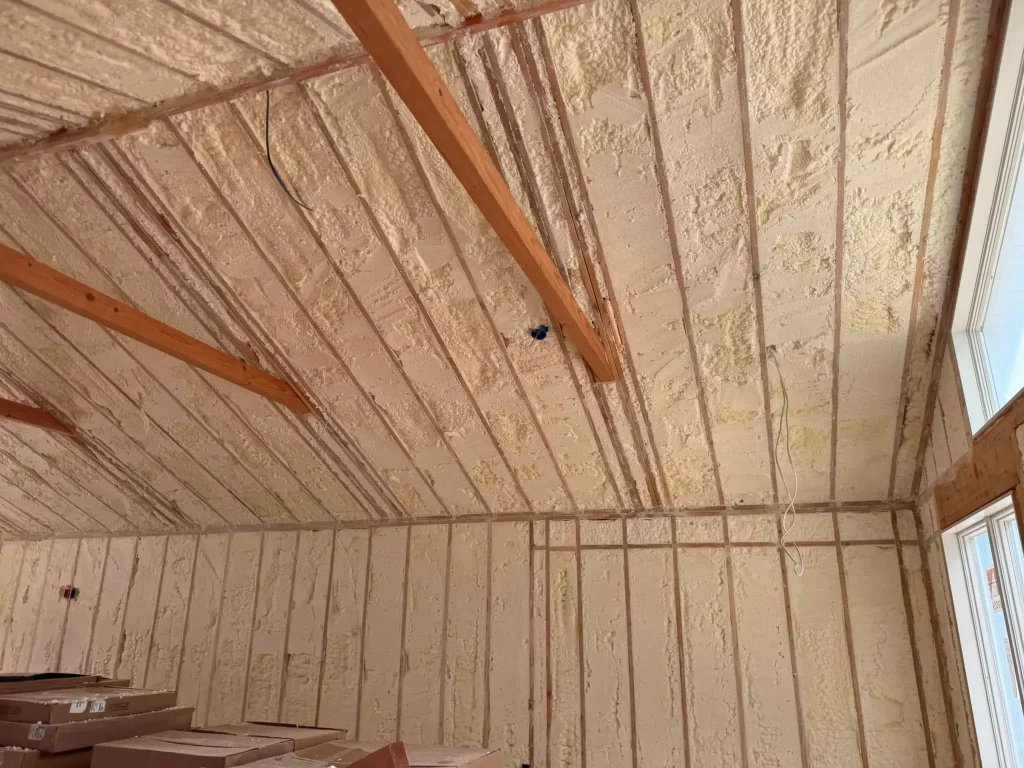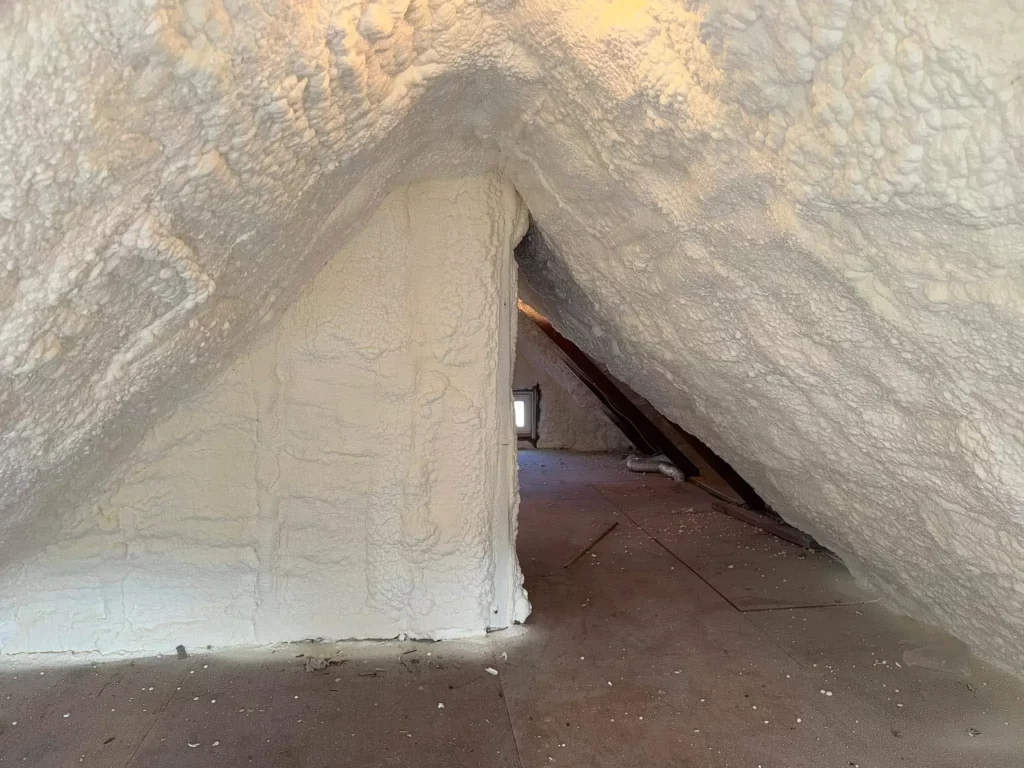
You step into your home on a chilly winter day and feel that instant comfort, or you walk into an office building during summer and notice the cool air holding steady. That’s insulation at work, quietly keeping temperatures in check and your energy bills manageable. But what exactly makes one home or business space feel just right while others struggle with drafts or skyrocketing costs? The answer lies in the types of insulation you choose and how they’re applied.
Insulation acts as a barrier that slows down heat transfer, whether it’s escaping from inside during cold weather or sneaking in from outside on hot days. This fundamental role extends to various benefits, particularly in residential and commercial settings. For homes, it means cozier rooms and lower heating bills; for businesses, it translates to productive workspaces and reduced operational expenses. Poor insulation doesn’t just affect comfort—it wastes energy, which adds up fast. In fact, a report from the U.S. Department of Energy shows that homes with adequate insulation can cut heating and cooling costs by up to 30% U.S. Department of Energy.
This guide pulls together everything you need to know about insulation, drawing from years of hands-on work in the field to break down the options in a way that’s straightforward and actionable. You’ll start with the basics of how insulation functions, then dive into every major type, complete with real-world pros and cons. From there, you’ll see how to pick the best fit for residential or commercial needs, tackle installation steps, spot common pitfalls, and even look at what’s coming next in the industry. By the end, you’ll have the tools to make informed decisions that boost performance in any building.
Here’s what you’ll cover:
Whether you’re renovating a house or outfitting a new office, this resource equips you with the knowledge to get superior results.
At its simplest, insulation fills the gaps in walls, attics, and floors to trap air, which naturally resists temperature changes. Think of it like a thick winter coat for your building—it keeps the warmth where you want it. Without solid insulation, your HVAC system works overtime, pulling in more electricity or gas just to maintain basics.
The importance hits home when you consider energy use. Buildings account for nearly 40% of U.S. energy consumption, much of it tied to heating and cooling, according to data from the International Energy Agency. Proper insulation addresses that directly by creating a tighter envelope around the structure. It doesn’t just save money; it also reduces your carbon footprint since less fuel gets burned for power.
For homeowners, good insulation means fewer hot spots or cold rooms, leading to better sleep and daily comfort. Businesses benefit too—consistent temperatures keep employees focused without the distraction of stuffy or chilly areas. Plus, in commercial spaces like warehouses, insulation helps control noise and moisture, preventing issues like mold growth.
But here’s the thing: not all insulation performs the same. Factors like R-value, a measure of thermal resistance, play a big role. Higher R-values block heat more effectively, but you also need to think about where it’s installed—attics often need more than walls. Understanding these basics sets the stage for choosing wisely.
Key Takeaways
Dozens of insulation materials exist, but a handful dominate because they balance cost, ease, and performance. We’ll start by outlining the main categories in order: fiberglass, mineral wool, cellulose, spray foam, rigid foam boards, and reflective insulation. Let’s examine each one, starting with the most common and moving to specialized options. This breakdown includes real applications to help you picture where they’d fit best.
Fiberglass comes as loose-fill, batts, or rolls made from fine glass fibers. It’s one of the oldest and most affordable choices, often pink or yellow from brands like Owens Corning. You blow it into attics or stuff batts between wall studs during construction.
Pros include low cost—around $0.50 per square foot—and fire resistance since glass doesn’t burn easily. It’s great for DIY projects because it’s widely available at hardware stores. However, it can irritate skin and lungs during handling, so wear protective gear. Over time, it might settle and lose some effectiveness if not installed right.
In a typical two-story home, fiberglass batts in the walls provide solid baseline protection without breaking the bank. For businesses, it’s useful in drop ceilings for offices.
Expert Tip: When installing fiberglass batts, cut them slightly oversized to ensure a snug fit around pipes and wires—this maximizes coverage and avoids gaps that let heat sneak through.
Also called rock wool, this type uses basalt rock and slag spun into fibers. It arrives in batts or boards, similar to fiberglass but denser. Rockwool offers strong soundproofing, which makes it popular for homes near busy roads or commercial spaces with machinery.
It resists fire up to 2,000 degrees Fahrenheit and repels water, reducing mold risk. Drawbacks? It’s pricier at about $1 per square foot and heavier, so it needs sturdy support. A study by the National Institute of Standards and Technology highlights its durability in high-moisture environments.
Picture insulating a home theater room—mineral wool quiets external noise while keeping the space comfortable.
Made from recycled paper treated with fire retardants, cellulose is blown into attics or walls using special equipment. It’s eco-friendly, with up to 85% recycled content, and settles tightly to fill odd spaces.
At $1.50 per square foot, it’s mid-range in price. It absorbs moisture better than synthetics, which can be a plus or minus depending on your climate—if damp, it needs a vapor barrier. The U.S. Environmental Protection Agency notes its high R-value per inch, around 3.5, making it dense.
Homeowners in older houses love it for retrofits since it conforms to irregular framing.
This expands on contact from liquid chemicals, creating a seamless seal. Open-cell spray foam is softer and better for sound, while closed-cell is rigid and moisture-resistant. Prices run $1 to $3 per square foot, but it lasts decades.
Closed-cell spray foam boasts an R-value up to 7, higher than most, and it adds structural strength to roofs. Open-cell is lighter and cheaper but permits some air movement. In humid areas, closed-cell prevents rot; a report from Building Science Corporation emphasizes its air-sealing power, reducing leaks by 75%.
For businesses like restaurants, spray foam under slabs keeps floors cool in kitchens.
Expert Tip: Opt for professional application with spray foam—uneven mixing can lead to off-gassing or weak spots that compromise the whole job.

These are stiff panels of polystyrene or polyisocyanurate, cut to fit basements or exteriors. They’re moisture-proof and high-R (up to 5 per inch), ideal for below-grade spaces.
Cost is $0.25 to $2 per square foot. They’re not fluffy like batts, so they work where space is tight. Cons include a need for furring strips to attach drywall, adding steps.
In commercial retrofits, boards go over existing walls to boost insulation without gutting interiors.
Foil-faced materials reflect heat rather than absorb it, used in attics or radiant barriers. They’re thin, easy to install, and effective in hot climates, bouncing back up to 97% of radiant heat per Oak Ridge National Laboratory tests.
At $0.50 per square foot, they’re budget-friendly but less effective against conductive heat. Best as a supplement in sunny regions.
Here’s a quick comparison table for R-values and costs:
| Type | R-Value per Inch | Cost per Sq Ft | Best For |
|---|---|---|---|
| Fiberglass | 2.9-3.8 | $0.50 | Attics, Walls |
| Mineral Wool | 3.0-4.0 | $1.00 | Soundproofing |
| Cellulose | 3.1-3.8 | $1.50 | Retrofits |
| Spray Foam (Open) | 3.5 | $1.00 | Air Sealing |
| Spray Foam (Closed) | 6.0-7.0 | $2.00-$3.00 | Moisture Control |
| Rigid Foam | 3.8-5.0 | $0.25-$2.00 | Basements |
| Reflective | Varies (reflective) | $0.50 | Hot Climates |
Key Takeaways
Homes vary by size, age, and location, so your choice starts with assessing needs. In colder climates, prioritize high-R in attics (R-49 recommended by the U.S. Department of Energy). For milder areas, focus on walls.
Start with an energy audit to find leaks—tools like blower doors reveal weak spots. Then, layer types: fiberglass in walls, spray foam in rim joists for total coverage.
For older homes, blown-in cellulose fills cavities without removing siding. New builds benefit from rigid boards under siding for a continuous barrier.
Market stat: Upgrading home insulation yields a 10-15% ROI through savings, per a Lawrence Berkeley National Laboratory analysis.
Expert Tip: In homes with radiant heating, pair reflective insulation with foam boards to enhance floor efficiency without blocking pipes.
Commercial spaces demand durability and quick ROI. Warehouses use spray foam for vast roofs, cutting HVAC loads by 20-30%. Offices prefer mineral wool in partitions for acoustics.
Consider occupancy—high-traffic retail needs fire-rated options like fiberglass. For cold storage, closed-cell foam maintains sub-zero temps.
Data point: Commercial buildings with updated insulation save $0.50 per square foot yearly on energy, according to the U.S. Green Building Council.
DIY works for loose-fill, but pros handle foams to avoid voids. Steps include:
Hire certified installers for rebates; improper jobs waste materials.
Expert Tip: Test air tightness post-install with a smoke pencil—puffs reveal gaps you can fix on the spot.
Settling happens with loose-fill: compact it well. Moisture traps heat in wet insulation—add drainage in basements.
Pests chew fiberglass: treat with borates. Noise from installation? Schedule during off-hours for businesses.
Solution: Regular inspections spot issues early, maintaining R-value over time.
Track success with utility bills pre- and post-install. Infrared cameras spot hot/cold areas. Aim for under 0.35 ACH50 on blower door tests.
ROI calculator from Energy Star: Input costs to see payback in 3-7 years.
Stat: Insulated buildings reduce emissions by 15%, per IPCC reports.
Smart materials with phase-change tech adjust to temps. Aerogels offer ultra-high R in thin layers. Bio-based foams from plants cut synthetics.
Expect 3D-printed insulation for custom fits by 2030. Market growth: Insulation demand rises 5% yearly, driven by codes, says Grand View Research.

Check your climate zone via the U.S. Department of Energy map. Northern areas need R-30 to R-60 in attics; southern, R-19 to R-38. Factor in ceiling height and windows.
Yes, if air sealing matters—savings offset premiums in 5 years. For basic jobs, stick to batts.
Absolutely. Mineral wool or open-cell foam absorbs sound waves better than fiberglass. Add it to interior walls for quiet.
Every 5-10 years, or after storms. Look for settling, moisture, or damage from pests.
It does by stabilizing temps, but pair with dehumidifiers in basements. Closed-cell types resist moisture best.
Yes, up to $1,200 via the Inflation Reduction Act for energy-efficient installs. Check IRS guidelines.
You’ve now got a full picture of insulation types, from fiberglass basics to spray foam innovations, plus tips for homes, businesses, and beyond. The key is matching materials to your space for real comfort and savings—start with an audit, choose based on needs, and maintain it well. Keep this guide handy as you plan; it covers the essentials to avoid common mistakes and maximize benefits. Take that first step toward a more efficient building today.
Recently, Peninsula Insulation expanded its insulation services across new regional markets to meet growing residential and commercial demand, reinforcing its commitment to energy efficiency and quality craftsmanship.
For tailored advice on selecting and installing the right insulation, reach out to Peninsula Insulation, LLC. Their team brings practical experience to help you achieve top performance. Contact wil@mdsprayfoam.net or call (410) 770-2624 to discuss your project and get a consultation.